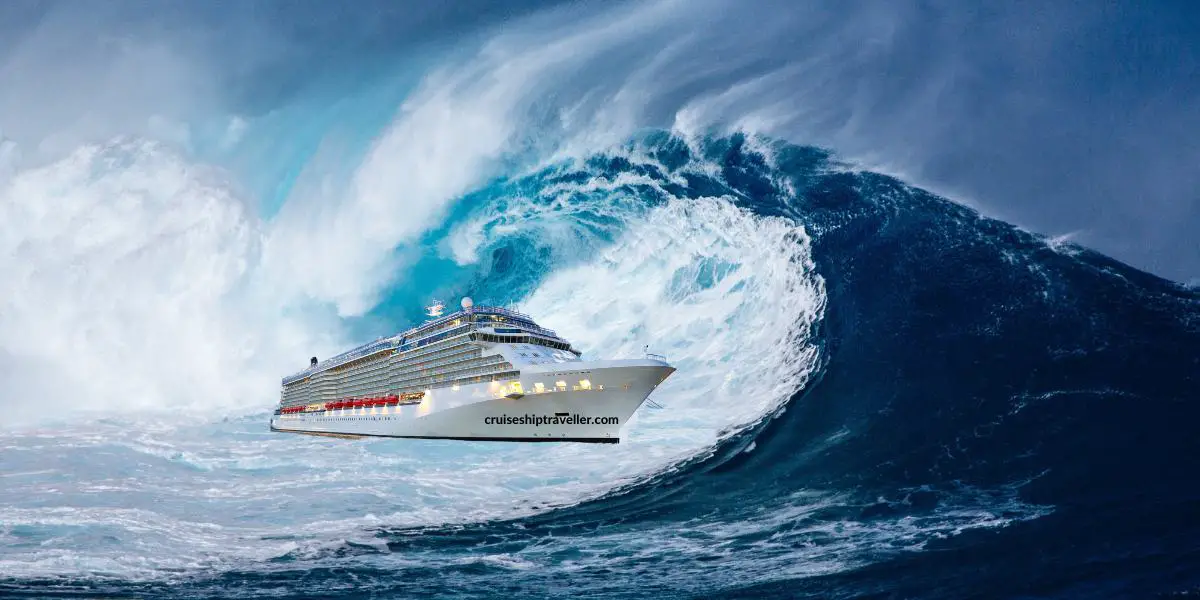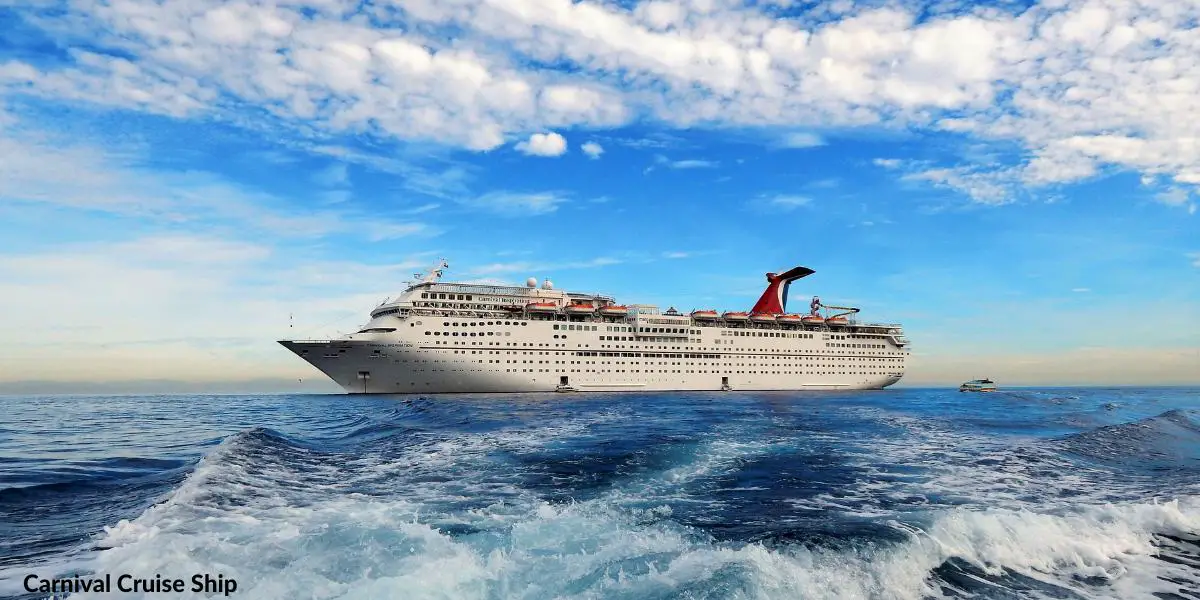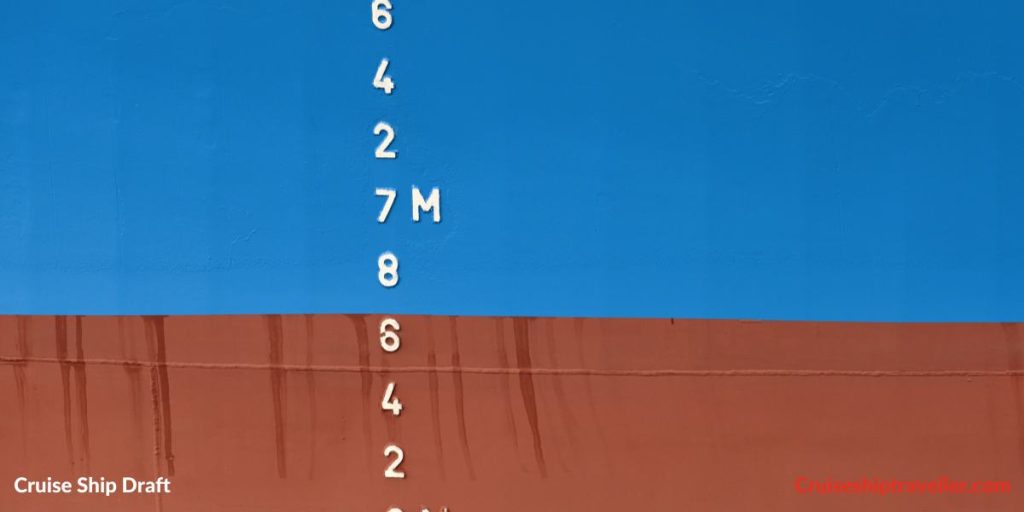Rogue waves can be huge and appear out of nowhere. If you are new to cruising or have any concerns after hearing about these freak waves, you may wonder if a rogue wave has ever hit a cruise ship. And if so, what happened? Did it survive or capsize?
We look at some of the most famous interactions between rogue waves and cruise ships, discover just how big they can be, and find out what happens if and when they ever hit a cruise ship.

What is a Rogue Wave?
A rogue wave is a rare extra-large wave appearing on the ocean surface without warning. They are not restricted to the seas and can occur on large open-water bodies such as lakes.
Rogue waves are defined as waves that are at least two times the significant wave height of the area.
The significant wave height is the average of the largest third of waves over a given period.
This makes rogue waves significantly larger than other waves in the area.
Rogue waves can be extremely dangerous for small and large vessels such as cruise ships and even oil rigs.
Rogue waves are also known by many other names that signify huge waves, including:
- Abnormal waves
- Episodic waves
- Extreme waves
- Freak waves
- Killer waves
- Monster waves
If a rogue wave is seen on the coastline, they are sometimes called a “sneaker wave” or a “king wave” in Australia.

How Large Can Rogue Waves Be?
The rogue way that hit Queen Elizabeth 2 was estimated to be up to 96ft in height, possibly the largest rogue wave ever witnessed.
Beating that was when a fishing boat was hit in 1991, and a series of buoys in the area recorded a rogue wave at 100.7 feet.
Other accounts of rogue waves report them to be over 50ft to 70ft.
It’s quite possible more rogue ways have reached more than 100 ft in size but the odds of them ever being in the vicinity of a cruise ship are very low.
What Causes a Rogue Wave?
The causes of rogue waves are still largely unknown, but scientists believe they are caused by a combination of factors.
One theory is that rogue waves are created when two different ocean swells combine to create a larger wave. This can happen when two weather systems with different wind speeds and directions interact.
Another theory is that rogue waves can be created due to strong winds blowing over a long fetch of water. For example, if a low-pressure system moved across the ocean with high winds. The long fetch of water will create large swells which can combine to form a rogue wave.
Rogue waves aren’t just found in rough seas, they have also been known to occur in relatively calm sea conditions.
Can a Rogue Wave Sink a Cruise Ship (Or Capsize)?
Given that we have highlighted rogue waves can reach 100ft, it is entirely plausible that a rogue wave could capsize or sink a cruise ship, although the likelihood of this happening is extremely small.
The force of the water hitting the ship’s side at high speed would be enough to cause the cruise ship to tip over.
The weight of the water would also cause the ship’s hull to buckle and possibly break apart.
The pressure from the rogue wave could also cause severe damage to any windows and external features of the ship.
Inside the ship, passengers could be injured or even killed if thrown around by the force of the wave and hit by any internal objects.

Has a Rogue Wave hit a Cruise Ship?
There have been five recorded instances of a rogue wave hitting cruise ships or passengers carrying ocean liners (QE2). There were no reported casualties, and all five ships survived to sail for many more years after.
Viking Polaris
In December 2022, an expedition cruise ship sailing on the Antarctic was hit by a rogue wave. Windows were smashed on deck 2 on the port side of the ship.
A 62-year-old passenger has died after sustaining injuries from the broken glass. 4 other passengers were treated for injuries sustained from the accident.
One of the passengers reported how the rogue wave hits the cruise ship and that it took the brunt of the wave without it rocking the ship back and forth. She was surprised at how stable it remained.
You can watch the NBC news report here:
Holland America’s MS Prinsendam
In 2007 the Holland America cruise ship MS Prinsendam (now MS Amera) was hit by a rogue wave estimated to be 39ft high.
The ship, which at the time had a capacity of 835, was struck by a freak wave in Cape Horn, Chile. Approximately 40 people were injured, with some requiring hospitalization.
MS Bremen and MS Caledonian Star
In 2001 Bahamian-registered cruise ships MS Bremen and MS Caledonian Star were both caught in a rogue wave in the South Atlantic Ocean.
Both were hit by a rogue wave around 98 feet high. Both ships suffered damage, including smashed bridge windows and destroyed navigation and communications equipment.
The Bremen was adrift for 2 hours with no propulsion, while the Caledonian Star had to be tugged by the Argentinian Navy at the Argentine port of Ushuaia.
Both ships served many more years as sea vessels, and the Bremen is still sailing.
Queen Elizabeth 2
In September of 1995, the Cunard line Queen Elizabeth 2 ocean liner was hit by an estimated 92 to 96-foot high rogue wave caused by Hurricane Luis while crossing North Atlantic Ocean.
Although not technically cruise ships, ocean liners like the Titanic was, are built even more robustly to cope with the roughest seas on transatlantic crossings.
The freak wave hit the ship in the early hours, 200 miles off Newfoundland, as it was carrying almost 3000 passengers. The cruise captain had previously requested all passengers stay in their quarters due to the hurricane conditions, and many would have been in their beds.
The ship took an almighty hit over the bow and subsequent hits by two more large waves. Amazingly no one was injured.
Some photos of the damage, as well as first-hand experiences, can be read here.
On the page, someone who claimed to be “Chief Cashier on that Voyage” stated:
” If you saw the film The Perfect Storm and the scene with the fishing boat climbing up this enormous wave then that was us.“
Here’s a clip of the Giant wave to give you an idea of the experience that he was referring to:
MV Explorer
On the 26th of January 2005, the cruise ship MV Explorer, part of the Semester at Sea program, was hit by a 50ft rogue wave that smashed windows on the bridge, shorted navigational systems, and resulted in two engines failing.
The mid-sized cruise ship had approximately 700 students onboard at the time.
You can see a video of the aftermath and an example in our post of how a cruise ship does not tip over. Let’s just say even the aftermath was a scary experience, let alone being hit by the freak wave.
Further below, we have a video with footage the students filmed while in the ship after being hit by the freak wave.
Has a Rogue Wave Sunk a Cruise Ship?
While rogue waves are undoubtedly responsible for the sinking of smaller ships over the years, it’s very hard to know for certain if a rogue wave was the cause in many cases.
There are many accounts of ships going missing in the past without a trace, and it’s possible that some of these were due to rogue waves.
However, there have been no recorded cases of a rogue wave sinking a cruise ship.
The most likely reason for this is that technology has improved greatly over the years, and we are now better able to forecast weather and wave conditions in a way that would enable the crew and captain to take appropriate action to position the ship.
This means that cruise ships can avoid ocean areas where rogue waves are more likely to occur.
Albeit the real danger of rogue waves is that they are such sudden and unpredictable events that can appear without warning, there is only so much action a crew can take to avoid them.
Remember, in the event of a ship being damaged by a hit, cruise ships are equipped with enough liferafts and lifeboats for everyone.
Rest assured, cruise ship captains are some of the best ship captains in the world and your safety is paramount.

What Would Happen if a Rogue Wave Hit a Large Cruise Ship?
Many people wonder what would happen if a cruise ship was hit by one of the largest ever rogue waves.
There are many videos online of large waves hitting cruise ships, but they are just that large waves, nothing like being hit by a true rogue wave.
While there is no video evidence of a rogue wave hitting a cruise ship, the scenario has been played out on the big screen with huge modern-day cruise ships like those built by Royal Caribbean, such as Wonder of the Seas and Symphony of the Seas.
Rogue Waves Hitting Cruises Ships
For those curious this clip from the movie Poseidon shows a rogue wave hitting a cruise ship and causing it to capsize.
Although it’s worth noting, this is pure fiction, and the size of the rogue wave is highly exaggerated in relation to the size of the ship. In reality, a rogue wave has never capsized a modern cruise ship.
A huge rogue wave has hit a passenger ocean liner (Queen Elizabeth 2), which came away relatively unscathed.
What Happens After Being Hit By a Rogue Wave?
Although the video below doesn’t show the cruise ship being hit by the rogue wave, it does re-enact the moment and includes real video footage of passengers dealing with the aftermath.
How Big of a Wave can a Cruise Ship Handle?
Modern cruise ships typically handle waves of up to 50 feet.
Cruise ships typically encounter waves of 10 to 15ft without most passengers barely realizing it.
What Are the Chances of a Rogue Wave Hitting a Ship
There are typically over 310 cruise ships sailing at any given time, with an estimated 25 million people taking a cruise each year.
The odds of a rogue wave hitting a cruise ship are extremely low, which is why we never hear of the event occurring.
Rogue wave events are relatively rare given the size of the oceans combined, and when they do happen often, there are no ships within the vicinity, let alone a cruise ship.
Can a Cruise Ship Survive a Rogue Wave?
While it’s very unlikely a rogue wave will hit a cruise ship, if one did, the chances are that the ship would survive as has been the case in the real-life examples we covered above.
The design of the cruise ships keeps them afloat in the roughest of seas would see them through, although a rogue wave far exceeds the usual expectations a cruise ship is expected to encounter.
How to Survive a Rogue Wave on a Cruise Ship?
As a passenger on a cruise ship potentially being hit by a rogue wave, the safest place to be would be your stateroom, this will help protect you from being thrown around or hit by flying debris, falling decor, or sliding furniture.
Stairwells and hallways are also safer locations to gather as there is less chance of being thrown larger distances and being hit by falling or moving objects. This is where students were told to gather on the MV Explorer after it was hit by a rogue wave and the ship lost propulsion amidst very stormy seas.
If you are on deck, hold on to something sturdy and stay low to the ground.
Pay close attention to listening out for any instructions from the captain over the loudspeakers. Passengers may be asked to put on lifevests and possibly make their way to the deck with the lifeboats if abandoning the ship is a possibility.
What Size Rogue Wave can Sink a Cruise Ship?
Cruise ships come in all sizes, from carrying just a few hundred passengers to those that can accommodate over 6,000 guests.
The chance of a rogue wave sinking any size cruise ship is highly remote. The size of the rogue wave would have to be more than 70-100ft and hit the cruise at precisely the right angle. Even then, it’s possible the ship would remain afloat as they are designed to do so.
The larger the cruise ship, the more stable it is in the water and the less chance of it being sunk by a rogue wave.
The main cruise lines, Royal Caribbean, Carnival, MSC, Norwegian, Celebrity Cruises, Princess Cruises, and even Disney, have never had a ship even hit by a rogue wave and are of such sizes they should cope well if ever they were to encounter one.
However, as we covered above, one of Holland America’s cruise ships, the MS Prinsendam, was hit in 2007.
How is a Rogue Wave Different from a Tsunami?
A rogue wave is a one-off, large ocean wave that is not caused by an earthquake like a tsunami. They can appear out of nowhere and without warning but only last briefly.
Tsunamis are often caused by the movement of land, usually an ocean floor, that leads to a massive displacement of water and causes the seas to move at high speeds over a large area.
Unlike rogue waves, tsunamis can be barely noticeable on the surfaces of the seas. This makes them no threat to ships out at sea but can cause devastation to coastal areas as the waves increase in size as they come ashore.
Any cruise ships in ports or harbors would be at risk of being damaged in the path of a tsunami reaching land.
Frequently Asked Questions
Where do Rogue Waves Occur Most Often?
Rogue waves are known to occur in the Atlantic Ocean, the North Sea, and the southeast coast of South Africa.
How Many Ships Have Sunk Because of Rogue Waves?
While no cruise ships have been sunk by rogue waves, other types of ships have.
One of them was the Great Lakes freighter SS Edmund Fitzgerald which is thought to have been hit by a rogues wave on Lake Superior, one of the more expensive Lakes cruises. Although thankfully, not caused any cruise ships to sink on the Great lakes.
This also highlights that rogue waves don’t just pose a risk at sea but on any open body of water.
The only other instance of a rogue wave sinking a ship was when the Andrea Gail, a fishing boat, sank on the coast of Nova Scotia in 1991 where a series of buoys reported a wave 100.7 feet high!
You can find a full list of ship and rogue events here, the vast majority of which did not sink.
How Many Ships Have Capsized Due to Rogue Waves?
Since the year 2000, they have only been a couple of reports of boats and ships capsizing by rogue waves, and neither were cruise ships.
The only ship was in November 2000 when a 56ft research vessel, the R/V Ballena, was struck by a rogue wave near Point Conception off Santa Barbara, California. The ship was destroyed, but all the crew managed to survive.
Related Posts
- How do Cruise Ships Get Into the Water – Find out how cruise ships are launched.
- Can You Fish off a Cruise Ship?
Conclusion
While rogue waves are an interesting topic, the chance of one hitting a cruise ship is so remote it’s not something to be of concern.
Cruise ships are designed to withstand huge waves and the roughest seas in storms, so even if a rogue wave did hit, the ship would remain afloat, and damage would be minimal.


